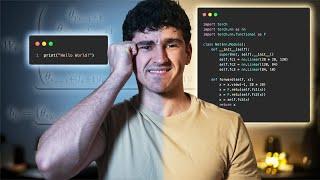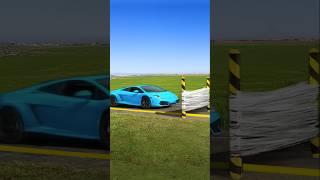
ML Was Hard Until I Learned These 5 Secrets!
Комментарии:

You just gotta think in the language of 'Moth'. like a 'Mothamatician'
Ответить
Hello I would like to enter the realm of Machine learning, but as you know AI is becoming better and better everyday, what should I do to be a Machine Learning Engineer...what's would I study?
Ответить
Нереально мощная связка ❤❤ спасибо тебе за контент
Ответить
As an software engineer by profession and being coding for more than 10 years, I 100% agree with your point. I have never met anyone who can just write a function and run it successfully everytime. Debugging is so integral to coding that I don't even treat it as a separate thing.
Ответить
Я чувствую что проёбываю какой-то шанс поднять бабла, и боюсь что стану бомжом
Ответить
Made $800 so far. Yes, I agree. New traders should also review their trades to understand their mistakes.😄
Ответить
talked bullshit through out..
Ответить
огонь, лучшая подработка в моей жизни
Ответить
Actually, I watch your videos to learn English
Your accent -> superb for Indians for IELTS or TOEFL

Спасибо, всё работает. Ждём новых связок.
Ответить
Одни из лучших в крипте. Лаба ван лав
Ответить
Связка огонь, автору респект
Ответить
thank you very much
Ответить
Thanks for this video. Many of my doubts are clear because of this video.
Ответить
You are cute
Ответить
Связка отличная, респект автору!
Ответить
This was actually helpful! Particularly your insights around getting thrown math formulas and being expected to understand it. It totally resonated that you need to understand the intuition before you can hope to understand the formula. Thank you so much!
Ответить
Emma, you’ve got a gift for trading! I’m here for all the tips! ��
Ответить
Think more about binary options because easy money is great.
Ответить
ES IST ARBEIT
Ответить
¿Podrías hacer un video sobre cómo gestionar el riesgo en trading de opciones?
Ответить
¡El video sobre trading de criptomonedas fue muy informativo! Ahora me siento más preparado para invertir.😘
Ответить
Изучу все, что у тебя есть в телеге, потому что это было полезно
Ответить
God bless you
Ответить
Спасибо за видео, достаточно доступно излагаете.
Ответить
Связка топовая. Спасибо, бро!
Ответить
Machine learning seemed difficult until I learned these five key secrets: mastering the fundamentals, understanding algorithms deeply, utilizing practical projects, leveraging powerful tools, and continuously learning from real-world data. These strategies simplify the learning process and enhance your ML skills.
Ответить
What is Mac specs to start learning ML? Currently I have an old MacBook Air which is I’m not sure to start with! Memory size, speed processing…etc
Ответить
Urban Spurs
Ответить
Code is not really an issue for me, the math is my frustration.
Ответить
Enjoyment = win
No need to reconfirm thx 4 vid

Excellent
Ответить
Your lessons help me improve my trading strategy. Thank you for your expertise and experience!⚠
Ответить
waste of time
Ответить
To understand the math of ML, I suggest learning some math. Of course derivations are the application of mathematical rules. There are no "secret techniques"
Ответить
I've been coding professionally for 45+ years (Chevron, Exxon, NASA, AirBP, blah blah blah) and here are some of the beginner mistakes I see:
1. Jumping into your coding session before you understand the problem at hand. When sitting with a customer gathering requirements or trying to figure out a problem you shouldn't be anywhere near a computer (within reason). Have a legal pad handy and LISTEN to yourself or your customer talk about the problem and ultimately, what they want to get out of your interaction. You are NOT trying to solve the issue at this stage, but to fully understand the issue. Jumping into a coding session while doing this will lead to hours of solving a problem that the customer didn't have. Go by a simple rule here: If you don't understand the problem at hand then no amount of experience or code will ultimately solve the problem.
2. After gathering requirements, stop and understand the steps necessary to solve the problem. Visio is your friend here. Draw a flowchart describing the steps necessary to solve the problem (called coding-by-diagram) and then, once you think you have it down, review it with the customer (or yourself or other developers, playing devil's advocate). Try and poke holes in the decision tree and break it. If things look good, then you can proceed to actually start coding. This step alone represents 80% of your task as a developer following the 80/20 rule. 80% thinking about the problem and diagramming the solution and 20% actual coding.
3. You made a good point about debugging being a big part of coding BUT if you followed step 2 above, most of your 'debugging on paper' has already been done. Begin coding here and implement your flowchart into whatever language you are working with. It is literally that easy. Skipping step #2 leads to hours of "shotgun coding" wherein you throw code at a problem and get frustrated because you are making up your flowchart (program flow) WHILE coding. Drawing it out beforehand would have already showed you how to solve it, coding is simply putting the flowchart into actual code. Easy-peezy.
4. This point is mostly true of very young coders. They type at 58,000 words per minute and mistakenly think 'coding speed' is a measure of skill and experience, it's not. The best coders I know will sit and stare at a prompt and then 15 minutes later, carefully write out some of the most elegant code I've ever seen. The young 'speedsters' will code themselves into frustration and an early ulcer in no time flat. Coding isn't a competition, it's about achieving a thing of beauty that just works, every time. Anyone can write a song, but Artists will mull the lyrics over in their heads for weeks or months and spend just 15 minutes putting pen to paper - elegance at it's best.
In summary, I'm a pilot so will try and use an analogy: I never take off and try to figure our WHERE or WHY I'm going while in the air (see step 1). I should have asked that question well in advance. Likewise, while going to WHEREVER, I don't 'figure it out' while airborne how to deal with bad weather, icing, unanticipated deviations or mechanical problems (see step 2) - I've thought about these things on the ground before I ever got to the plane and have plan in place already (a.k.a. flight planning). By the time I'm airborne, I'm just executing that plan. As us pilots say: Plan the flight and Fly the Plan.
If you're not into aviation, you could substitute a long car trip too. The steps are the same. EVERY good developer I know follows these steps religiously. It's a winning formula that just keeps working. If, during your flowcharting session you find that you're missing data or didn't account for a certain possibility, then you still have time to get with your customer, get the question answered, rolled into your flow chart before you get anywhere near your grubby, crumb-infested keyboard ;)

"Writing code is not actually coding, debugging is coding." perfect bro
Ответить
🧠 dammit i wanna know all abt ml and code my own model after the weekend.
Ответить
1. Think of mathematical formulations as being an idea from someone else, which is only being put in math terms as a tool
2. Math derivations are the continuous applications of rules
3. Debugging is a part of coding
4. Set a breakpoint in the code
5. Mastering ML is hard

Moral of video: MATH is actually a MOTH
Ответить
Thankyou buddy
Ответить
Hey Boris, Can you help me with my little question..The question I had was, what topics of ML should I know to get my first job next year?
And BTW, I'm way too fascinated by your knowledge, and believe me when I say you have helped my love for ML grow by 100x. Nothing's able to demotivate me anymore, and I'm maintaining my pace. I'm following your roadmap too.

great job mate really I hope they teach us this stuff at the uni. Keep it man
Ответить
So so so grateful for this video. I have an AI Application I want to design and was worried about the math peice until I watched the Harvard Deep learning video and now you reaffirmed what I understood there.
Ответить



























